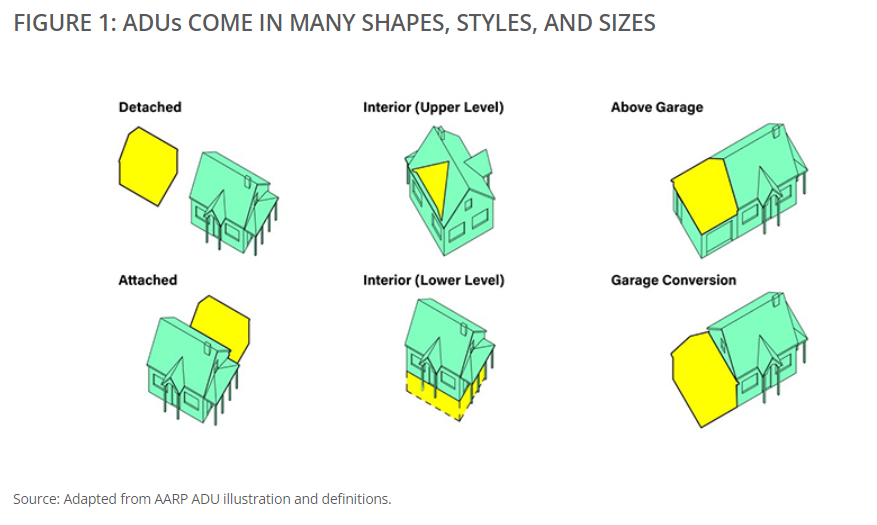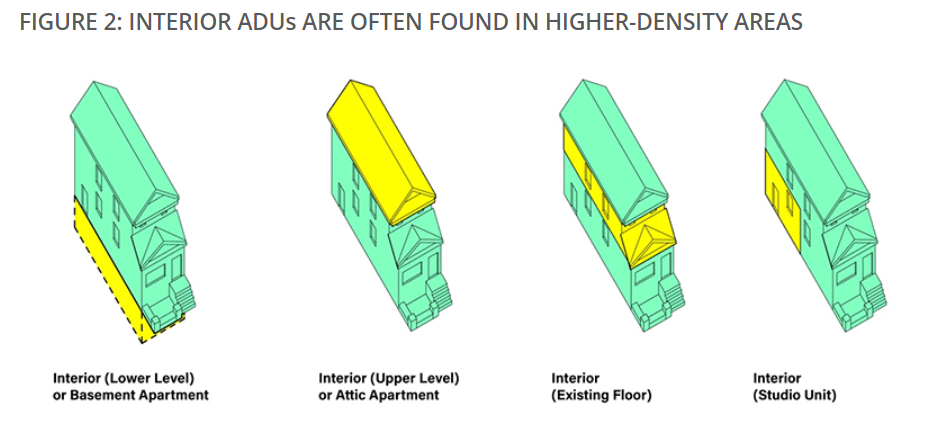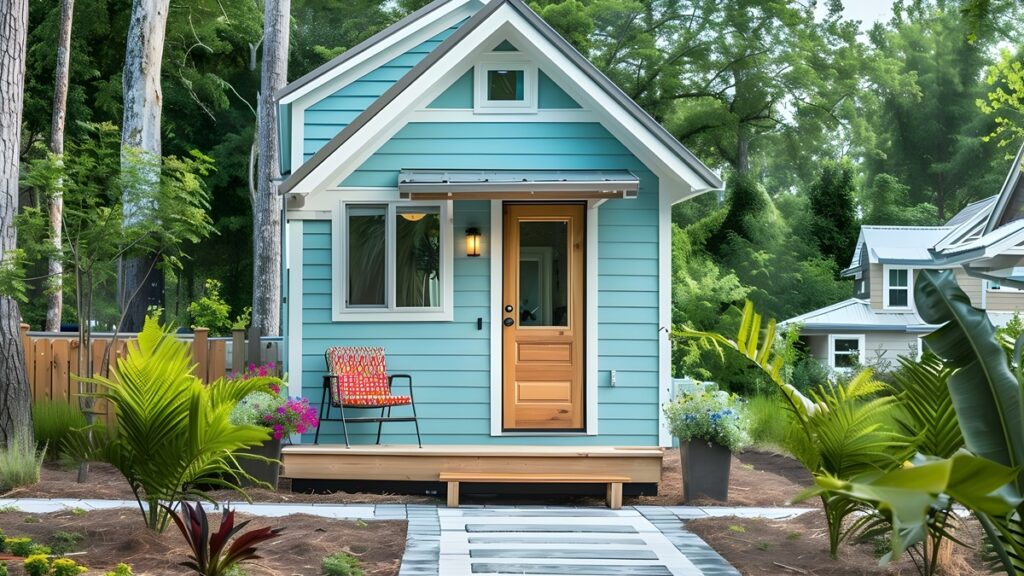Nonprofits are increasingly turning to accessory dwelling units (ADUs) as a tool to combat the nation’s ongoing affordable housing crisis. ADUs are smaller, independent living spaces located on the same property as a primary residence, equipped with their own kitchen, bathroom, and sleeping area. By adding much-needed housing stock, these units are offering solutions to both rural and urban communities, as well as providing support for aging adults and low- to moderate-income homeowners.
A new paper co-published by the Harvard Joint Center for Housing Studies and NeighborWorks America, “Nonprofit Accessory Dwelling Unit (ADU) Programs as Affordable Housing Strategies,” highlights how nonprofits are spearheading ADU initiatives. The paper, based on research from the Gramlich Fellow program, includes site visits and interviews with nonprofit practitioners engaged in ADU programs across the U.S.

ADUs Serve a Range of Needs
Nonprofits have utilized ADUs to address a wide range of housing needs. In Scranton, Pennsylvania, the Elder Cottage Housing Opportunity (ECHO), supported by NeighborWorks Northeastern Pennsylvania, allows older adults to rent ADUs on properties owned by their children or caregivers. This program helps aging adults remain in their communities while providing extra income for homeowners.
In New York City, the Basement Apartments Safe for Everyone (BASE) Campaign advocates for legalizing and upgrading underground apartments, many of which qualify as interior ADUs. These apartments provide affordable housing options in high-density areas where space is limited. The Asian Americans for Equality (AAFE) community development organization also supports ADU renovations through its Landlord Repair Fund, helping to bring non-compliant ADUs up to code and ensure safety for residents.
Nonprofits are not just addressing the demand for new housing but are also providing funding to homeowners for ADU construction. The Plus One ADU Program, active across New York state, works with homeowners and local governments to finance the development and renovation of ADUs, ensuring that low- and moderate-income households can benefit from these housing solutions.

Innovations and Challenges in ADU Development
These ADU programs showcase a range of innovations to meet specific housing needs. For example, the ECHO program simplifies the development process by having a local Area Agency on Aging own the units, making it easier for older adults to rent without bearing the burden of construction or property management.
However, nonprofits face several challenges in implementing ADU initiatives. One key issue is navigating the complex zoning and permitting regulations that vary across the country. Financing ADU construction is another challenge, with nonprofits needing to secure funding from local and state governments, as well as private financial institutions. The diversity of ADU types—from detached units to basement apartments—means that development costs and financing strategies vary widely.
In addition, ADUs can be politically contentious, particularly in neighborhoods where zoning codes restrict their construction. Nonprofit organizations have taken steps to raise awareness about the benefits of ADUs, conducting community outreach, participating in political advocacy, and organizing events to educate the public on how ADUs can provide safe and affordable housing.
A Path Forward for Affordable Housing
Despite the challenges, nonprofit organizations are proving that ADUs can be a viable solution to the affordable housing crisis. Their efforts highlight the potential for ADUs to serve smaller households, provide aging adults with housing stability, and create income opportunities for homeowners. As more cities and states consider changes to zoning laws and provide funding for ADU development, the future of ADUs looks promising as a key strategy in expanding affordable housing across the U.S.
Click here to view the full “Nonprofit Accessory Dwelling Unit (ADU) Programs as Affordable Housing Strategies” report.






